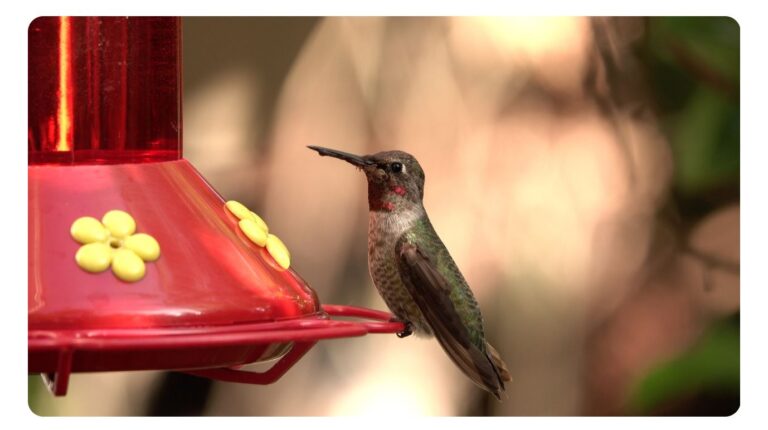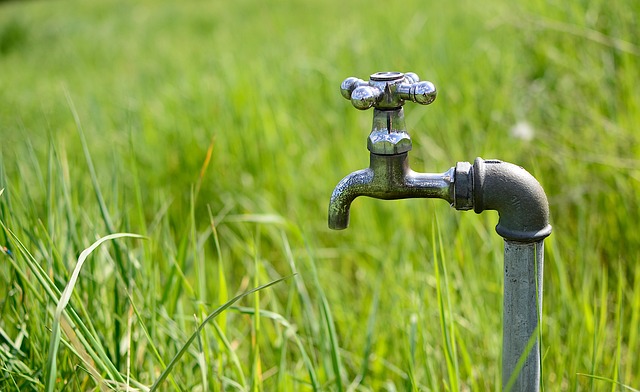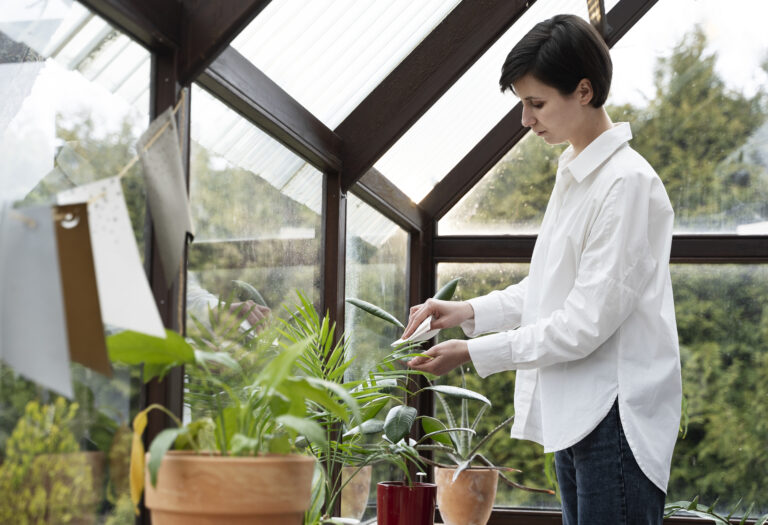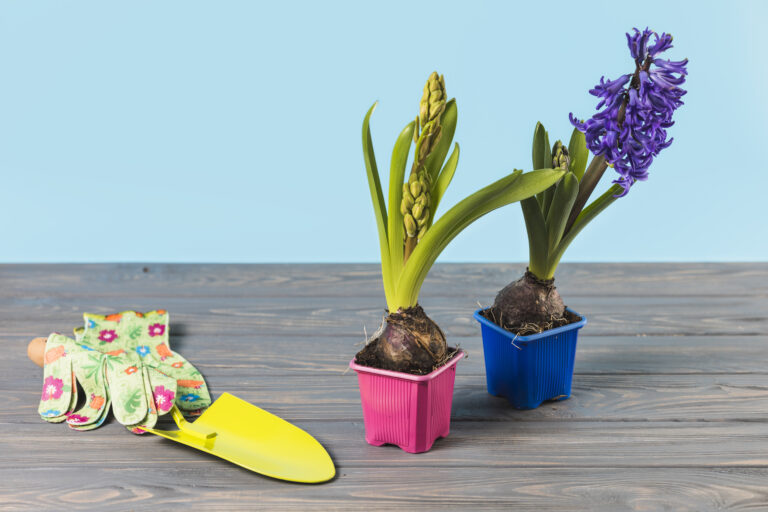What Constitutes Gardening? Unearth the Essentials
Gardening involves more than just planting seeds. It is a blend of art, science, and care for nature.
At its core, gardening is the practice of growing and cultivating plants. This can include flowers, vegetables, herbs, and trees. Many people find joy in gardening. It offers a chance to connect with nature, relax, and enjoy fresh air. Gardening can take many forms.
From small window boxes to large community gardens, each space has its unique features. Understanding what constitutes gardening can help you appreciate this rewarding activity. Whether you are a beginner or an experienced gardener, knowing the basics can enhance your experience. Explore the different aspects of gardening and discover what makes it so special.

Credit: www.britannica.com
Roots Of Gardening: A Historical Dig
Gardening has deep roots in human history. It began as a basic need for food. Over time, it grew into an art form. Understanding its history helps us appreciate its beauty.
Ancient Beginnings
Gardening dates back thousands of years. Early humans gathered plants for food. They learned to plant seeds for crops. Here are some key points about ancient gardening:
- Fertile Crescent: This area is known as the birthplace of agriculture.
- Egyptians: They cultivated flowers and vegetables along the Nile.
- Chinese: They practiced gardening for food and medicine.
Gardens were often linked to religion. Many cultures viewed plants as sacred. They believed gardens brought peace and harmony.
Cultivation Through The Ages
As societies grew, gardening evolved. Different cultures introduced new techniques.
| Time Period | Gardening Practices | Key Crops |
|---|---|---|
| Middle Ages | Monastic gardens for food and herbs | Wheat, barley, herbs |
| Renaissance | Formal gardens with designs | Vegetables, flowers |
| Modern Era | Urban gardens and landscaping | Fruits, vegetables, ornamental plants |
Gardening became a way to show wealth. Wealthy families built elaborate gardens. They featured fountains, sculptures, and rare plants.
Today, gardening includes many styles. From vegetable patches to flower beds, each tells a story.
Gardening Defined: More Than Just Plants
Gardening is more than planting flowers or growing vegetables. It is a blend of art and science. People garden for various reasons. It can be for beauty, food, or even relaxation. Understanding what gardening truly means helps everyone appreciate its value.
The Art And Science Of Horticulture
Horticulture combines creativity with knowledge. It involves:
- Soil management
- Plant selection
- Pest control
- Watering techniques
Each aspect requires skill and understanding. Gardeners study plant types and their needs. They learn about:
- Sunlight requirements
- Watering schedules
- Nutrient needs
These skills help create healthy plants. Good gardening also considers the environment. Sustainable practices make gardening better for nature.
Beyond Aesthetics: Gardening With Purpose
Gardening serves many purposes. It is not just about looks. Here are some key benefits:
| Purpose | Description |
|---|---|
| Food Production | Growing fruits and vegetables for personal use. |
| Environmental Impact | Support biodiversity and reduce carbon footprint. |
| Therapeutic Benefits | Gardening helps reduce stress and improve mental health. |
| Community Building | Sharing gardens can strengthen community ties. |
Gardening can help feed families. It can also promote health and well-being. Community gardens foster social connections. Each garden has a purpose that goes beyond its beauty.
Essential Tools Of The Trade
Gardening requires the right tools. These tools help make tasks easier. They can save time and effort. Knowing what tools to use is key for every gardener.
From digging to pruning, each tool has its purpose. Let’s explore some essential gardening tools. This toolkit can help you achieve great results.
From Spades To Shears: A Toolkit Overview
Every gardener needs a few basic tools. A spade is great for digging. It helps move soil and plant flowers. A trowel is smaller and works well for planting seeds.
Shears are important too. They help trim bushes and shape plants. Pruning shears cut branches easily. Gloves protect your hands from thorns and dirt.
A rake clears leaves and debris. A hoe helps with weeding. A watering can gives plants the moisture they need. These tools work together for healthy gardens.
Investing In Quality: Tool Maintenance
Good tools last longer. Cleaning your tools after use is important. Remove dirt and plant residue. This prevents rust and keeps them sharp.
Store tools in a dry place. This keeps them safe from moisture. Regularly check for damage. Repair or replace tools as needed.
Using quality tools makes gardening enjoyable. They make tasks easier and faster. Taking care of your tools is part of good gardening.
The Soil Spectrum: Understanding Your Foundation
Soil is the heart of gardening. It supports plants and provides nutrients. Understanding soil is key to healthy gardens. Different soils have different qualities. Knowing your soil type helps you choose the right plants. Let’s explore the soil spectrum.
Soil Types And Their Traits
There are several soil types. Each type has unique traits. The main types are clay, sandy, silt, loam, and chalky soil.
Clay soil is dense and holds water well. It can be hard to work with. Sandy soil drains quickly but lacks nutrients. Silt soil is smooth and retains moisture. Loam is a mix of sand, silt, and clay. It is ideal for most plants. Chalky soil is alkaline and can be stony.
Nutrient Management For Healthy Growth
Plants need nutrients to thrive. Nutrient management is vital for garden success. Key nutrients include nitrogen, phosphorus, and potassium.
Test your soil to know its nutrient levels. This helps you add the right fertilizers. Organic matter, like compost, enriches soil. It improves texture and adds nutrients. Regularly check your soil to maintain its health.
Healthy soil leads to strong plants. Strong plants resist pests and diseases. Focus on soil care for a vibrant garden.
Plant Selection: Choosing The Right Green Companions
Choosing the right plants is key to a successful garden. Each plant has its needs and benefits. Picking the right ones can help your garden thrive. Consider factors like climate, soil type, and space. These choices affect growth and beauty.
Climate Considerations
Climate plays a huge role in plant selection. Different plants thrive in different climates. Here are some key points:
- Temperature: Know your area’s temperature range.
- Rainfall: Consider how much rain your garden gets.
- Sunlight: Check how many hours of sunlight your garden receives.
- Frost Dates: Be aware of your area’s frost dates.
Use a climate zone map to help choose plants. This ensures they grow well in your area. Local gardening centers can provide advice too.
Designing With Diversity: Annuals, Perennials, And More
Using a mix of plants creates a vibrant garden. Here’s a simple guide to plant types:
| Type | Characteristics | Examples |
|---|---|---|
| Annuals | Last one season. Bright flowers. Easy to replace. | Petunias, Marigolds, Zinnias |
| Perennials | Last multiple years. Return each season. Less maintenance. | Hostas, Daylilies, Peonies |
| Shrubs | Provide structure. Many sizes and shapes. | Hydrangeas, Boxwoods, Azaleas |
Mixing these types adds texture and color. Use annuals for quick blooms. Choose perennials for lasting beauty. Shrubs can frame your garden nicely.
Consider your garden’s theme. Use colors and shapes that complement each other. This creates a pleasing design. A well-planned garden attracts more visitors too.
Watering Wisdom: Hydration For Plant Health
Water is vital for plant health. It nourishes roots and supports growth. Understanding how to water plants correctly can make a big difference. Proper hydration helps plants thrive. Let’s explore effective irrigation techniques and smart water conservation strategies.
Irrigation Techniques
Different methods exist for watering plants. Each method has its benefits. Drip irrigation delivers water directly to roots. This method reduces waste and keeps soil moist.
Soaker hoses are another option. They release water slowly along their length. This helps plants absorb moisture without runoff. Sprinklers are also common. They cover a large area quickly but can waste water.
Hand watering allows for more control. It’s ideal for small gardens or pots. Knowing when and how much to water is key. Early morning or late evening is best for watering. This minimizes evaporation and maximizes absorption.
Water Conservation Strategies
Conserving water is essential for gardens. One way is to use mulch. It keeps soil cool and reduces evaporation. Organic materials like straw or wood chips work well.
Collecting rainwater is another effective method. Rain barrels can store water for dry days. This practice is eco-friendly and cost-effective.
Choose drought-resistant plants. They need less water and thrive in dry conditions. Native plants often require less care and water. Grouping plants with similar needs helps too. This reduces the overall water usage.
Monitoring soil moisture is important. Use a moisture meter or your finger. Water only when necessary to avoid overwatering.
Pest Control: Protecting Your Garden Naturally
Gardening is rewarding, but pests can ruin it. Natural pest control helps protect plants without harmful chemicals. This section explores common garden pests and effective organic solutions.
Identifying Common Garden Pests
Know your enemies. Identifying pests is the first step in control. Here are some common garden pests:
- Aphids: Small, soft-bodied insects that suck plant sap.
- Spider Mites: Tiny pests that cause yellow spots on leaves.
- Whiteflies: Winged insects that feed on the undersides of leaves.
- Slugs and Snails: Creatures that eat holes in leaves.
- Japanese Beetles: Shiny insects that damage flowers and foliage.
Look for signs of infestation. Yellowing leaves, holes, or webbing indicate pests. Early detection helps prevent serious damage.
Organic Solutions For Pest Management
Fight pests naturally. Here are effective organic solutions:
- Handpicking: Remove pests by hand. This works well for larger insects.
- Neem Oil: A natural pesticide that disrupts pest life cycles.
- Insecticidal Soap: A safe spray that kills soft-bodied insects on contact.
- Companion Planting: Plant pest-repellent plants near vulnerable ones.
- Beneficial Insects: Introduce ladybugs or lacewings to eat harmful pests.
Regular monitoring is key. Check plants often for pests. Healthy plants are less likely to attract pests.
By using these organic methods, you can protect your garden naturally. Enjoy a thriving garden free from harmful chemicals.
Gardening Through The Seasons
Gardening is a year-round activity. Each season brings new tasks and challenges. Understanding these changes helps gardeners thrive. From planting in spring to harvesting in fall, each season has its own rhythm.
Weather patterns also shift. Some seasons bring warmth, while others bring cold. Knowing how to adapt makes gardening easier. This section explores seasonal chores and tips.
Seasonal Chores And Tips
Spring is a time for planting. Prepare the soil and choose your seeds. Water regularly to help plants grow. Summer requires more attention. Keep an eye on weeds and pests. Water deeply but less often to strengthen roots.
In fall, it’s time to harvest. Gather ripe fruits and vegetables. Clean up fallen leaves and debris. This helps prevent diseases. Winter is a time for rest. Cover plants to protect them from frost. Plan for next year’s garden during this quiet time.
Preparing For Extremes: Frost And Heatwaves
Frost can harm tender plants. Cover them with cloth or use cloches. Move potted plants indoors during cold nights. Check the forecast for sudden drops in temperature.
Heatwaves can stress plants. Water early in the morning or late in the evening. Mulch around plants to keep soil cool. Shade plants during the hottest parts of the day.
Understanding these seasonal changes makes gardening easier. Being prepared helps you enjoy your garden all year long.
Harvesting And Beyond: The Fruits Of Your Labor
Harvesting is the exciting part of gardening. It means you can enjoy the rewards of your hard work. Picking fresh fruits and vegetables is satisfying. It also brings joy to your meals. But there’s more to it than just gathering. Proper care after harvesting ensures your crops last longer.
Timing Your Harvest
Timing is key for a successful harvest. Each plant has its peak time. Check for signs of ripeness. Color and size often indicate readiness. For fruits, a slight softness can be a good sign. For vegetables, firmness usually means they are ready.
Harvest early in the morning. This helps preserve flavor and nutrients. Avoid harvesting during extreme heat. High temperatures can affect taste and texture.
Post-harvest Handling And Storage
What you do after harvest matters. Handle your crops gently. Bruised fruits and vegetables spoil faster. Clean them properly. Remove dirt but avoid soaking them too much.
Storage is important for keeping freshness. Use breathable bags or containers. Cool, dark places work best. Some crops need refrigeration. Others prefer room temperature.
Check your stored produce often. Remove any spoiled items quickly. This helps prevent others from going bad.

Credit: www.slideshare.net
Community And Urban Gardening: Cultivating Together
Community and urban gardening has grown in popularity. People join together to create green spaces. These gardens bring many benefits to neighborhoods. They help people connect with nature and each other. Let’s explore the rise of urban green spaces and the benefits of community gardening initiatives.
The Rise Of Urban Green Spaces
Urban areas often lack greenery. Many cities face challenges like pollution and heat. Urban green spaces help combat these issues. They provide fresh air and shade. Here are some key points:
- Increased biodiversity in cities
- Improved mental health for residents
- Enhanced property values
- Opportunities for local food production
More cities create parks and gardens. They transform vacant lots into vibrant spaces. These areas allow residents to grow food. They also promote social interaction. Community members work side by side. Together, they cultivate a sense of belonging.
Benefits Of Community Gardening Initiatives
Community gardening offers many advantages. These initiatives foster cooperation among neighbors. They create a sense of pride and ownership. Here are some benefits:
- Food Security: Local gardens provide fresh produce.
- Social Interaction: People meet and build friendships.
- Education: Gardening teaches skills and knowledge.
- Environmental Impact: Gardens improve air quality.
Community gardens also encourage healthy living. They promote physical activity and better diets. Gardening can lower stress levels. It connects people to nature and each other.
| Benefit | Description |
|---|---|
| Food Security | Access to fresh, healthy food in urban areas. |
| Social Interaction | Builds friendships and community ties. |
| Education | Teaches gardening techniques and sustainability. |
| Environmental Impact | Enhances local ecosystems and biodiversity. |
Community and urban gardening is more than planting. It is about growing together. These spaces enrich lives and neighborhoods.
Sustainable Practices: The Eco-friendly Gardener
Gardening can be a fun way to connect with nature. Eco-friendly gardening focuses on caring for the environment. It uses practices that help the planet. Sustainable gardening helps create healthy ecosystems. Every gardener can make a positive impact.
Composting Essentials
Composting is a simple way to recycle kitchen waste. You can turn scraps into rich soil. Start by collecting fruit peels, vegetable scraps, and coffee grounds. Avoid meat and dairy products. These can attract pests.
Choose a spot in your yard for the compost pile. A bin or a simple heap works well. Mix green materials like grass clippings with brown materials like leaves. This balance helps the compost break down faster.
Turn your compost every few weeks. This adds air and speeds up the process. In a few months, you will have dark, crumbly compost. Use it to nourish your plants. This practice reduces waste and enriches the soil.
Biodiversity And Its Role In Sustainability
Biodiversity means having many different plants and animals. A diverse garden is healthier and more resilient. It attracts beneficial insects and birds. These creatures help control pests naturally.
Plant native species to support local wildlife. Native plants require less water and care. They thrive in your area’s climate and soil. This choice promotes a balanced ecosystem.
Creating habitats for wildlife is vital. Add birdhouses, bee hotels, and butterfly gardens. These features encourage more life in your garden. A rich ecosystem leads to better growth for your plants.
Garden Aesthetics: Designing Your Personal Eden
Creating a garden is about more than just planting. It’s about crafting a beautiful space. Your garden should reflect your personality. With thoughtful design, you can create your own piece of paradise.
Elements Of Landscape Design
Landscape design includes various elements that enhance beauty. Here are some key components:
- Color: Choose plants with vibrant colors. They add life to the space.
- Texture: Mix plants with different textures. This creates visual interest.
- Form: Use shapes to guide the eye. Curved paths are inviting.
- Scale: Select plants that fit the space. Balance large and small elements.
- Line: Use lines to direct movement. Pathways and borders can lead the way.
These elements work together. They help create harmony in your garden. Consider these aspects while planning.
Incorporating Personal Style
Your garden should tell your story. Here are ways to make it uniquely yours:
- Choose Favorite Plants: Select flowers and shrubs you love.
- Use Personal Decor: Add items that reflect your taste. Statues, pots, and benches can enhance beauty.
- Color Palette: Pick colors that appeal to you. Soft pastels or bold hues can set the mood.
- Theme: Decide on a theme. Rustic, modern, or tropical themes can guide choices.
Designing your garden allows for creativity. It’s a chance to express yourself. Make your garden a true reflection of who you are. Enjoy the process of designing your personal Eden.
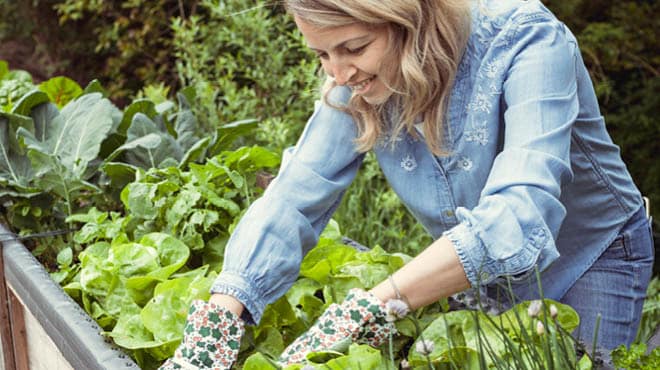
Credit: www.mayoclinichealthsystem.org
Frequently Asked Questions
What Is The Definition Of Gardening?
Gardening is the practice of cultivating and managing plants for aesthetic, recreational, or practical purposes. It involves activities like planting, watering, weeding, and harvesting. Gardens can range from small home plots to large public spaces. The goal is to enhance beauty, provide food, or create a relaxing environment.
What Are The Different Types Of Gardening?
There are several types of gardening, including vegetable, flower, herb, and container gardening. Each type has unique techniques and goals. Vegetable gardening focuses on growing edible plants, while flower gardening emphasizes ornamental aesthetics. Herb gardening cultivates aromatic plants, and container gardening utilizes pots to maximize space and versatility.
How Does Gardening Benefit Mental Health?
Gardening significantly boosts mental health by reducing stress and anxiety. Engaging with nature promotes relaxation and mindfulness. Additionally, nurturing plants fosters a sense of accomplishment and purpose. Many gardeners report improved mood and overall well-being. It serves as a therapeutic activity, providing joy and satisfaction through hands-on experiences.
What Tools Are Essential For Gardening?
Essential gardening tools include trowels, pruners, gloves, and watering cans. A shovel is needed for digging, while a rake helps with debris removal. Additionally, a hoe assists with weeding and soil cultivation. Having the right tools enhances efficiency and makes gardening tasks more manageable and enjoyable.
Conclusion
Gardening is more than just planting seeds. It involves nurturing life and enjoying nature. From growing vegetables to creating beautiful landscapes, gardening offers many benefits. It connects us to the earth and promotes well-being. Anyone can garden, regardless of experience.
Simple acts, like watering or weeding, make a difference. Embrace your gardening journey. Explore new plants and techniques. Enjoy the fresh air and peaceful moments. Gardening enriches our lives in many ways. Start small and watch your garden grow. Your efforts will bring joy and beauty.


